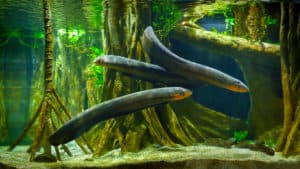In 1990, an angler named Chad Markham embarked on a fishing adventure in Lake St. Clair. Armed with a live shad lure, he cast his line into the water. Little did he know, he was about to make history by catching Michigan’s largest American eel ever recorded. How big was this slithering beast? Read on to find out.
Largest American Eel in Michigan
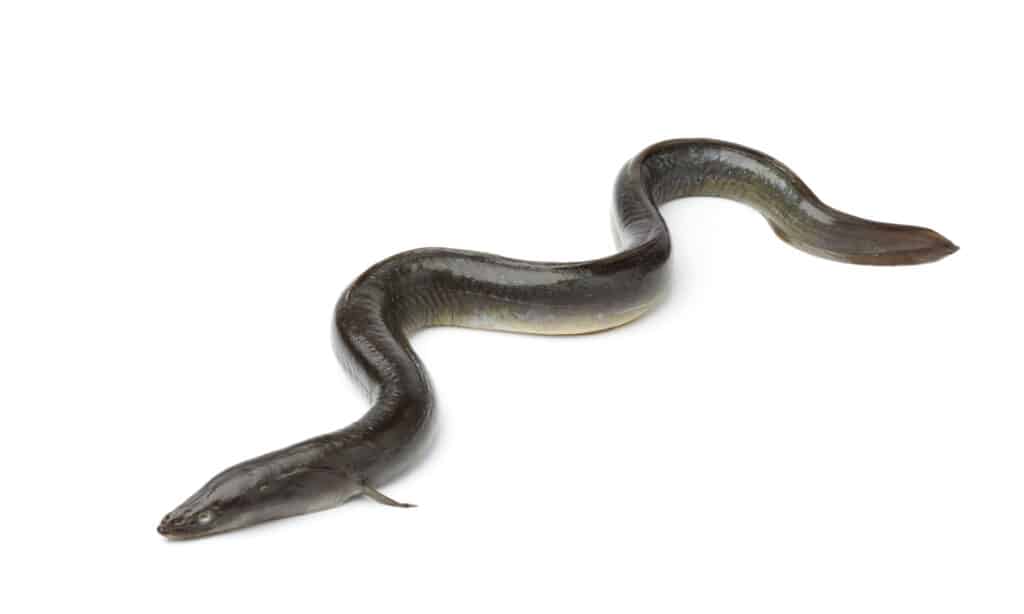
The American eel is a type of freshwater eel that can weigh up to 9 pounds.
©Picture Partners/Shutterstock.com
The largest American eel caught in Michigan weighed 7.44 pounds and measured 43 inches long. It was caught in 1990. The catch was made in Lake St. Clair, which sits in Macomb County.
Using a shad lure, angler Chad Markham was able to reel in this impressive catch. A shad lure imitates the appearance and movement of shad, which are small fish commonly found in freshwater bodies. And in this case, the imitation was good enough to fool an enormous eel.
Although abnormally large eels exist, they are not usually quite so big. Female American eels typically reach a maximum length of 4 feet, while males are smaller, measuring around 1.5 feet. In terms of weight, these eels can weigh up to 9 pounds.

About Lake St. Clair
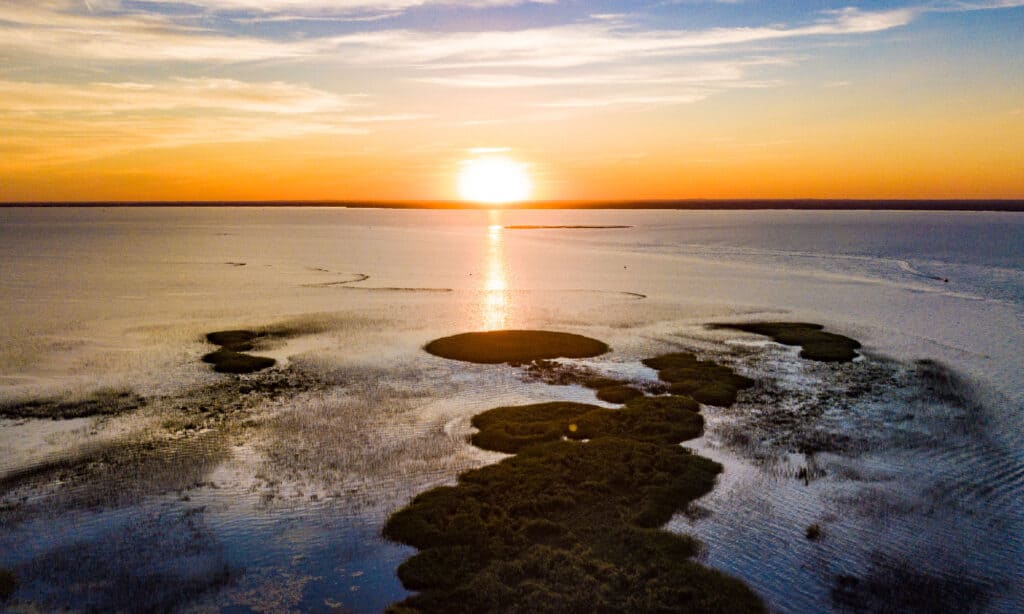
Lake St. Clair offers a lot of fishing opportunities, such as largemouth bass and walleye.
©iStock.com/Brian Sevald
Eels aren’t the only thing swimming in Lake St. Clair; there are also a lot of snakes and a variety of fish. The shallow, cold-water lake connects to Lake Huron and Lake Erie, making it an integral part of the Great Lakes system. While this location isn’t officially recognized as a Great Lake, locals see it differently. They regard Lake St. Clair as the heart of the Great Lakes chain due to its central position.
The lake’s shallow depth and cold-water conditions create the perfect habitat for various fish species. Anglers frequenting Lake St. Clair can target trout, such as cutthroat and rainbow trout. There’s also plenty of muskellunge, longnose gar, yellow perch, American gizzard shad, largemouth bass, smallmouth bass, and walleye.
More About American Eels
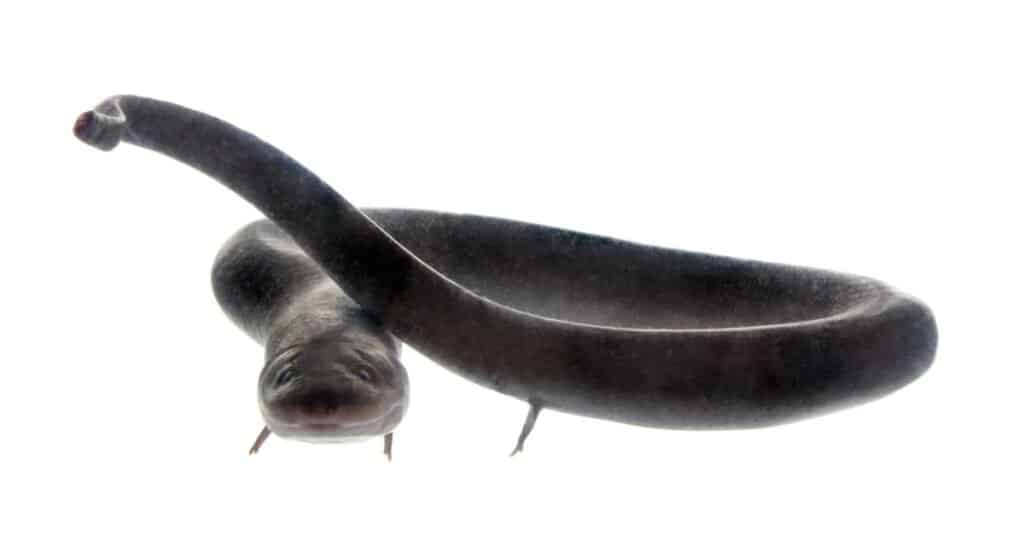
American eels can breathe through their skin and have a protective layer of mucus.
©Rosa Jay/Shutterstock.com
The American eel is a remarkable creature that can breathe through its skin. But what’s even more impressive is their ability to travel over land. That’s right; eels can be terrestrial when they have to.
During their migratory journey, eels encounter various obstacles, like land, that they have to overcome to continue their upstream migration. Their ability to survive out of water for hours allows them to cover dry areas without dying.
How Eels Move in Water vs. Land
When swimming, eels move their elongated bodies using undulating or wave-like motions. This allows them to reach speeds up to 2.4 mph. But on land, they can’t move as smoothly or as fast.
On land, eels rely on their muscles to create a similar lateral undulation but with a bit more oomph. They bend their bodies into waves from side to side and thrust forward, similar to how a caterpillar moves.
Mucus Layer
Eels are super slimy! This is because they’re covered in a slick layer of mucus. This slimy armor facilitates their smooth swimming and safeguards their well-being. The mucus creates a protective shield that lowers friction while swimming and blocks pathogens like bacteria and viruses.
Appearance and Life Stages
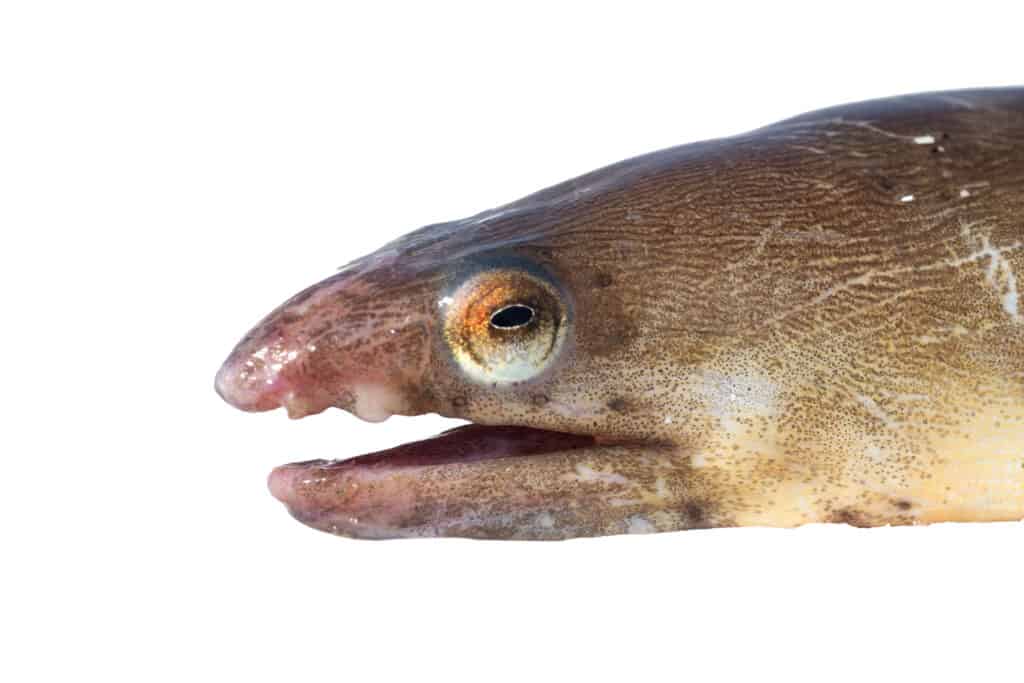
Female American eels usually have a slightly lighter coloration than males.
©IrinaK/Shutterstock.com
Eels are catadromous. That means they live in freshwater but swim all the way to the ocean to lay their eggs. Females can release up to 30 million eggs at a time.
American eels hang out in freshwater areas, but when it’s time to reproduce, they make an epic journey to the Sargasso Sea near Bermuda. A destination that’s over 1500 miles away from where they started in the St. Lawrence River.
Once the eggs hatch, the baby eels, called glass eels, go with the flow in the ocean currents for about a year. Then, they find their way back to rivers and streams along the Atlantic coast, like the St. Lawrence River, to grow up.
Appearance
Fully grown female American eels sport a lighter color, smaller eyes, and higher fins than males. Their bodies can be greenish, yellowish-brown, or blackish, with a whitish belly. Their continuous fin stretches around a rounded tail from the back to the belly.
Where Can You Find Eels?

American eels are native to Lake Ontario and still live there today.
©Michael J. Eves/Shutterstock.com
The American Eel is the only freshwater eel species native to North America. You can find them in rivers, lakes, estuaries, and coastal waters. They typically seek shelter and hunt in close-to-shore environments like tree snags and plants during the day. If the shelter is good enough, it’ll keep them from being eaten. Large fish and birds prey of prey, such as eagles and ospreys, love the taste of eel.
Luckily for the eel, most of their avian predators are asleep when they venture out to hunt. American eels are nocturnal hunters, preying on crustaceans, small insects, worms, and other fish. As opportunistic feeders, their diet extends to frogs, crayfish, snails, larval lamprey, and invasive species like the round goby.
Expanding Range
Originally native to Lake Ontario, American eels have expanded their range to other Great Lakes via man-made locks and canals. They are also prevalent in the inland waterways of Illinois, Indiana, Michigan, New York, Ohio, Pennsylvania, and Wisconsin.
The Welland Canal, a waterway linking Lakes Ontario and Erie, was instrumental in their spread to the upper Great Lakes. Now there are eels all over the place. They have established a significant presence in the Lake Erie drainages of Pennsylvania and Ohio in the Great Lakes.
The photo featured at the top of this post is © IrinaK/Shutterstock.com
Thank you for reading! Have some feedback for us? Contact the AZ Animals editorial team.





